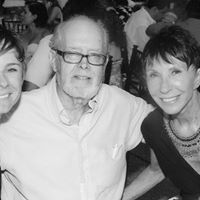Gerald C Stephens
age ~85
from Auburn, CA
- Also known as:
-
- Gerald Clyde Stephens
- Gerald Stevens
- Gerald C Stehens
Gerald Stephens Phones & Addresses
- Auburn, CA
- 8537 Magnolia Ave APT 138, Riverside, CA 92504 • (602)4712320
- Huntington Beach, CA
- 3090 Gleneagle Dr, Chandler, AZ 85249 • (480)6361979
- La Palma, CA
- Cathedral City, CA
- North Bend, WA
- Cypress, CA
- Yuma, AZ
- Maricopa, AZ
- Columbus, MI
- 8557 Via Tina, La Palma, CA 90623 • (714)3975738
Work
-
Position:Sales Occupations
Education
-
Degree:Associate degree or higher
Emails
Specialities
Personal Injury • Automobile Accidents and Injuries • Wrongful Death • Social Security Disability
Lawyers & Attorneys

Gerald Stephens - Lawyer
view sourceOffice:
Wilson & Stephens
Specialties:
Personal Injury
Automobile Accidents and Injuries
Wrongful Death
Social Security Disability
Automobile Accidents and Injuries
Wrongful Death
Social Security Disability
ISLN:
915286599
Admitted:
1984
University:
Baptist Christian University, B.A., 1972
Law School:
Southern University, School of Law, J.D., 1984
Name / Title
Company / Classification
Phones & Addresses
Owner
Gerald V Steven Jr
Legal Services Office
Legal Services Office
8998 Leedy Ln, Fair Oaks, CA 95628
(916)9655163
(916)9655163
Director
First Church of The Nazarene Abilene, Texas
Nazarene Church
Nazarene Church
(325)6924812
RAINMAKER AIR LLC
AGRATRONIX PROPERTIES CO., LLC
President
WATERLOO DIVING COMPANY, INC
17156 Bluewater Ln, Huntington Beach, CA 92649
Us Patents
-
Method Of Making An Acoustic Panel With A Triaxial Open-Weave Face Sheet
view source -
US Patent:46718419, Jun 9, 1987
-
Filed:Jan 6, 1986
-
Appl. No.:6/816359
-
Inventors:Gerald E. Stephens - Anaheim CA
-
Assignee:Rohr Industries, Inc. - Chula Vista CA
-
International Classification:B32B 3112
E04B 174
E04B 182 -
US Classification:156292
-
Abstract:A method of producing an open, triaxial woven, acoustic face sheet useful in acoustic energy absorbing panels for aircraft engines or the like. The composite face sheet is formed from carbon fibers in an epoxy resin matrix and has about 25 to 33% open area. This face sheet has lower weight and superior and more uniform strength and stiffness than biaxial composite face sheets. The face sheet is made by first weaving carbon fiber tows at warp angles of +30. degree. and -30. degree. and a fill angle of 90. degree. The woven sheet is impregnated with epoxy as other resins in a manner which produces no rich or starved areas and no blocked openings. The resulting prepreg material may be stored for extended periods at reduced temperatures. The prepreg material is shaped on a suitable mold surface and the resin is fully cured, preferably in a vacuum bag assembly in an autoclave. The resulting sheet has very light weight, an excellent percentage of openings and high strength and stiffness.
-
Method And Apparatus For Testing Gap Filler Materials
view source -
US Patent:51036770, Apr 14, 1992
-
Filed:Aug 20, 1990
-
Appl. No.:7/570053
-
Inventors:Gerald E. Stephens - Anaheim CA
-
Assignee:Northrop Corporation - Hawthorne CA
-
International Classification:G01N 332
-
US Classification:73812
-
Abstract:A system for testing the properties of a material used in sealing gaps between aircraft panels. The system includes a first device having a pair of interior plates positionable on opposite sides of a first specimen, a pair of intermediate plates located on the sides of the interior plates remote from the first specimen, a pair of exterior plates located on the sides of the intermediate plates remote from the specimen, drive shafts coupled to the exterior plates, a first mechanism connected to the drive shafts for imparting motion thereto, and a first electrical device connected to the interior plates for testing the properties of the first specimen during the operation of the first mechanism. The system also includes a second device having a pair of primary plates with interior portions spaced from each other, a pair of secondary plates secured to the interior portions of the primary plates on opposite sides of a second specimen, the second specimen being formed in a specimen-receiving space located entirely over only the interior portion of one of the primary plates, a second mechanism connected to the primary plates for imparting motion to at least one of the primary plates and its secured secondary plate, and a second electrical device connected to the secondary plates for testing the properties of the second specimen during the operation of the second mechanism. Also disclosed is a method of testing such specimen.
Resumes

Gerald A Stephens
view source
Gerald Stephens
view source
Gerald Stephens
view source
Gerald Stephens
view sourceLocation:
United States

Gerald Stephens
view sourceLocation:
United States
Youtube
Myspace

Gerald Stephens
view sourcePlaxo

Gerald Stephens Jr.
view sourceHoover, AL, USAHave lived in the southeast and midwestern United States, as well as in east and central Africa.

Gerald Stephens
view sourceLafayette, CA
Flickr

Gerald Stephens
view source
Gerald Stephens
view source
Gerald Stephens
view source
Gerald Stephens
view source
Gerald Stephens
view source
Gerald Jake Stephens
view source
Gerald Stephens
view source
Gerald Stephens
view sourceGoogleplus

Gerald Stephens

Gerald Stephens

Gerald Stephens

Gerald Stephens
Classmates

Gerald Stephens
view sourceSchools:
Emerson Elementary School Compton CA 1961-1964
Community:
Brandye Olson, Marie Hernandez, Sandy Houser, Irma Tanner

Gerald Stephens
view sourceSchools:
Lakeview High School Decatur IL 1971-1975
Community:
Robin Snelson

Gerald Stephens
view sourceSchools:
St. Boniface School Chicago IL 1976-1983, Holy Trinity School (Noble St.) Chicago IL 1983-1987
Community:
Sharon Williams, Karen Fela, Humberto Gonzalez, Karen Heffernan

Gerald Stephens
view sourceSchools:
Fairview Elementary School Birmingham AL 1934-1935, Minor Elementary School Birmingham AL 1935-1942

Gerald Stephens, Paris Hi...
view source
First Ward Elementary Sch...
view sourceGraduates:
Gerald Stephens (1951-1959),
Michael Mitchell (1978-1982),
Mike Greer (1960-1962),
Linda Devlin (1952-1956),
Jerry Franklin (1971-1975)
Michael Mitchell (1978-1982),
Mike Greer (1960-1962),
Linda Devlin (1952-1956),
Jerry Franklin (1971-1975)

Paris High School, Paris,...
view sourceGraduates:
Gerald Stephens (1959-1963),
Irene King (1986-1990),
Danny Patton (1999-2003),
Keith Roberson (1978-1982),
Debbie Davis (1970-1974),
Don Kosterman (1958-1962)
Irene King (1986-1990),
Danny Patton (1999-2003),
Keith Roberson (1978-1982),
Debbie Davis (1970-1974),
Don Kosterman (1958-1962)
Get Report for Gerald C Stephens from Auburn, CA, age ~85













